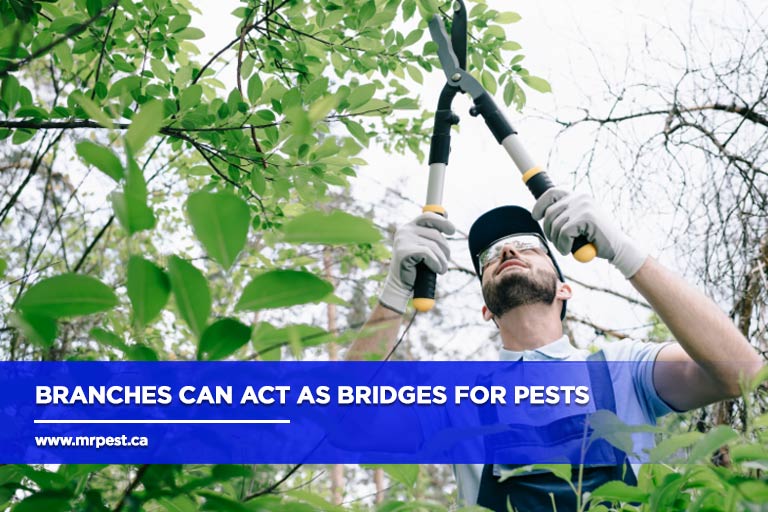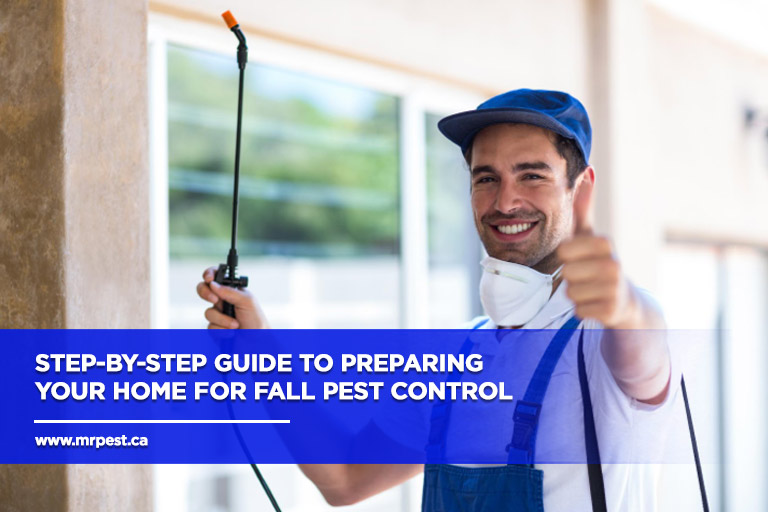As temperatures drop in fall, pests begin seeking warmer shelter, often turning to homes for protection from the cold. Preparing your home for fall pest control can help keep common invaders like rodents, spiders, and insects at bay. Here’s a step-by-step guide to pest-proofing your home effectively this season.
Step 1: Inspect the Exterior
Start by examining your home’s exterior for any openings or damage that pests could use as entry points.
- Check the foundation and walls: Look for cracks or small gaps, especially around pipes, wiring, and utility lines. Rodents can squeeze through holes as small as a dime, so even the tiniest gaps need attention. Seal these with caulk or expandable foam.
- Inspect windows and doors: Ensure all screens are in good condition, with no holes or tears. Weather stripping around doors should be secure and undamaged to block small insects.
- Roof and vents: Examine the roof for any loose shingles or gaps that squirrels and birds might access. Place mesh covers over vents and chimneys to block pests without affecting airflow.
Step 2: Clear Out Gutters and Drains
Debris-filled gutters and outdoor drains can become breeding grounds for pests, especially mosquitoes and other insects.
- Clean gutters and downspouts: Clear out leaves, twigs, and other buildup to prevent moisture, which attracts pests. Consider installing gutter guards to make cleaning easier.
- Direct water away from the foundation: Ensure that downspouts direct water at least a meter away from your home to avoid pooling.
Step 3: Trim Trees and Bushes Near the House

Overgrown trees, shrubs, and plants provide convenient pathways for pests to reach your home’s exterior walls, windows, and roof.
- Prune branches and shrubs: Trim back branches at least a meter from your home. This discourages squirrels, ants, and other pests from using them as a bridge.
- Clear away garden debris: Fallen leaves, mulch, and rotting vegetation can attract insects. Regularly clear your garden and consider adding a layer of gravel to prevent pest nesting.
Step 4: Store Firewood Away from the House
Stacking firewood against your house can create a perfect nesting area for pests like termites, spiders, and rodents.
- Store firewood at least 6 meters away: Place it off the ground and away from exterior walls. This keeps pests from migrating from the woodpile to your home.
- Cover your woodpile: Use a tarp or firewood cover to protect it from moisture, reducing the chance of insect infestations.
Step 5: Declutter Storage Spaces
Pests often find hiding spots in cluttered storage areas, such as garages, attics, and basements, which tend to accumulate items over time.
- Organize items in plastic bins: Store items in sealed plastic bins rather than cardboard boxes, which pests can chew through. Clear bins also make it easier to spot any signs of infestation.
- Reduce clutter: Sort through belongings and remove items you no longer need. Keeping spaces tidy will discourage pests from settling in unnoticed.
Step 6: Clean and Secure the Kitchen
A clean, sealed kitchen can go a long way in reducing pest issues. Fall is a prime season for mice and cockroaches to seek out food and warmth indoors.
- Store food in airtight containers: Use sealed containers for pantry staples like grains, flour, and pet food to block access.
- Clean countertops and floors: Wipe surfaces and sweep up any crumbs or spills daily, especially in hard-to-reach areas under appliances.
- Take out the trash regularly: Dispose of garbage frequently and use bins with tight-fitting lids to avoid attracting pests.
Step 7: Check Attic Insulation and Openings
The attic is a favourite spot for rodents, bats, and birds to nest during colder months. Preventing entry can save you from dealing with an infestation later.
- Inspect insulation and wiring: Look for gnaw marks or signs of nesting in attic insulation. Rodents, in particular, are known for chewing on electrical wires, which can create safety hazards.
- Secure vents and openings: Ensure vents are covered with a fine mesh screen to allow ventilation while blocking pests. Check for any gaps around the eaves and soffits, and seal them as needed.
Step 8: Schedule Regular Pest Control Inspections

Professional pest control inspections provide peace of mind and can catch potential problems early on. According to a study, controlling the growth of a pest population involves weighing the damage done by the ‘pests’ against the cost of the control action and choosing a suitable level at which to apply the control (Becker et al., 1970).
For those needing pest control in Alliston or surrounding areas, an expert can help assess your home and recommend the right level of intervention based on the severity of any infestation.
- Set up seasonal inspections: Regular pest control inspections can help prevent infestations from taking hold, particularly during the fall when pest activity picks up indoors.
- Consider eco-friendly pest control solutions: Many pest control companies offer green options that are safe for family, pets, and the environment while remaining effective at repelling pests.
Keep Your Home Pest-Free This Fall
As you prepare your home for fall, taking proactive steps can make all the difference in keeping unwanted pests at bay. If you need professional assistance, don’t hesitate to reach out to Mr. Pest Control for expert solutions tailored to your needs.
For reliable pest control in Midland, call (705) 739-7378 today and ensure your home remains a safe and comfortable haven this season!



